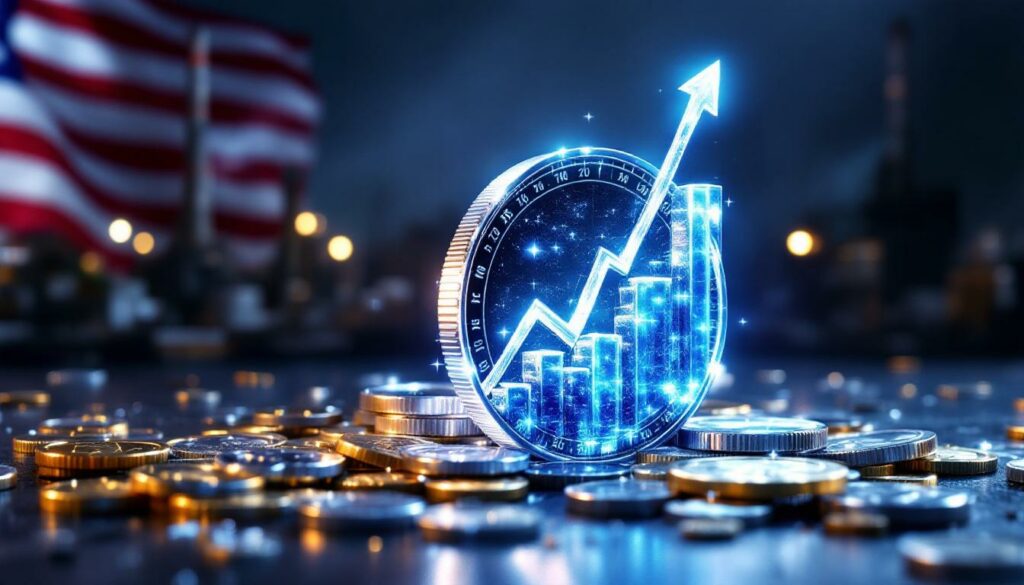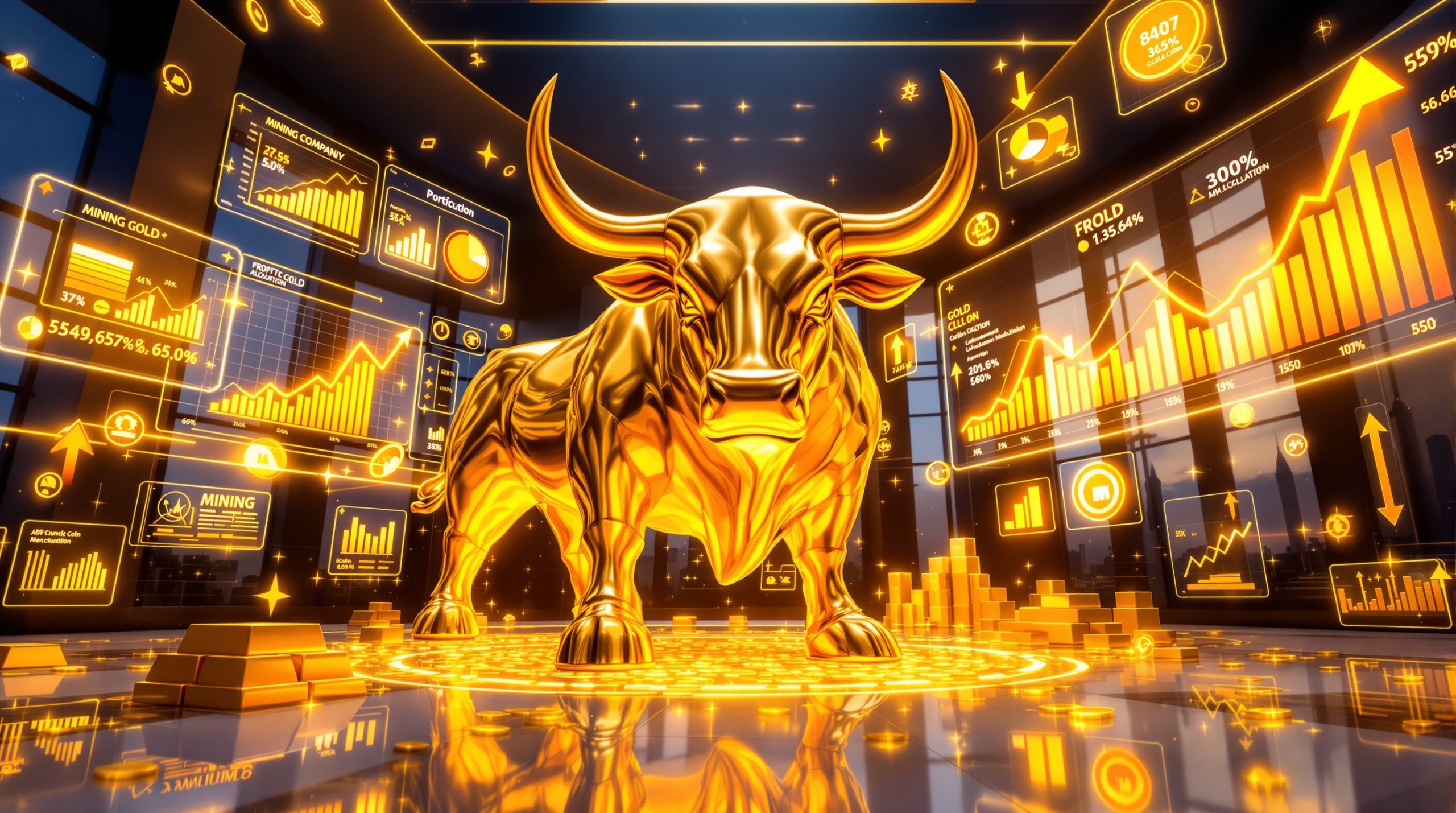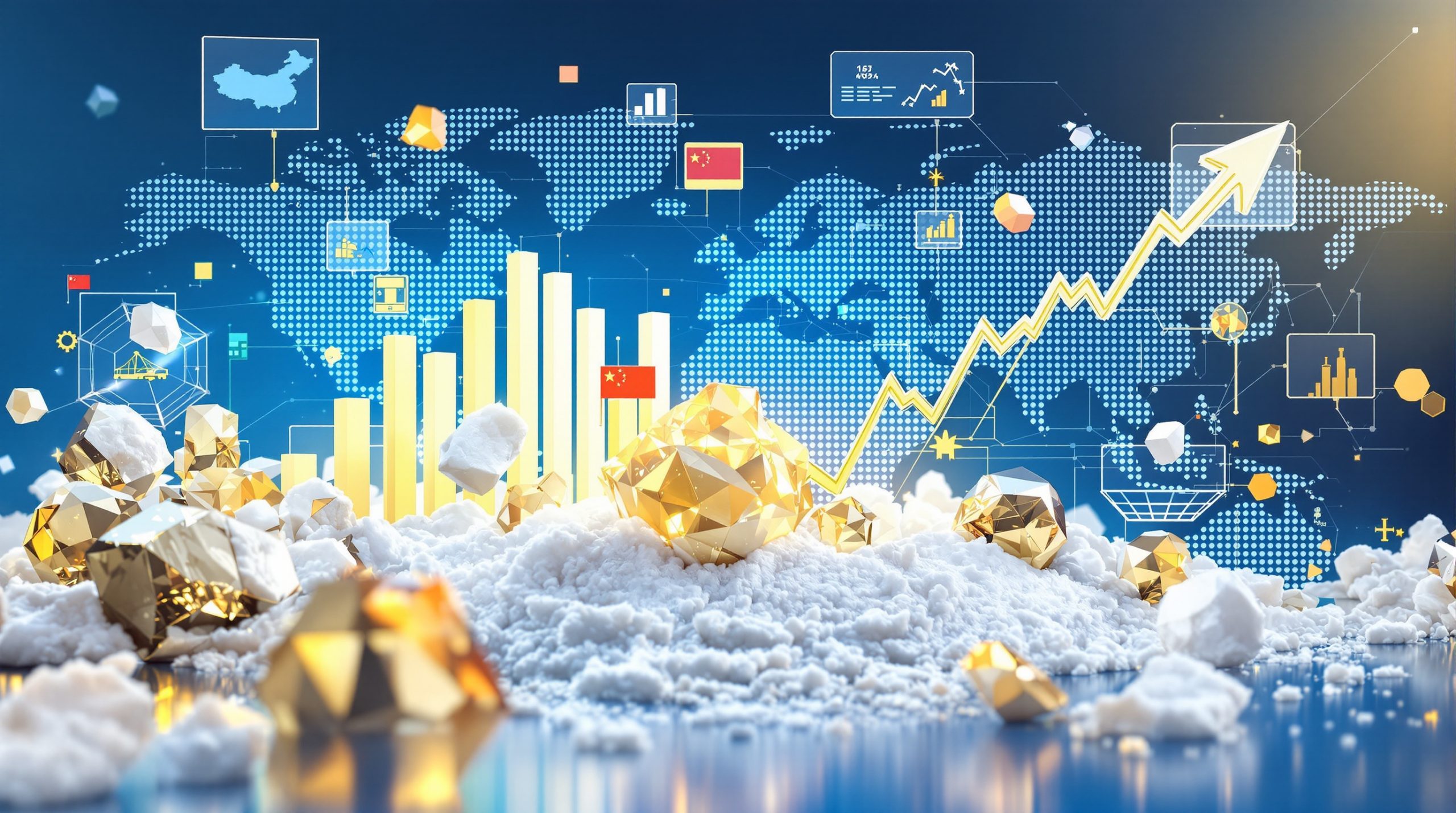What's Driving the Current Silver Price Surge?
The silver market has experienced a remarkable upturn, with prices breaking through the significant $35 per ounce threshold and approaching $36 as of June 2025. This breakthrough represents more than just a numerical milestone—it signals a fundamental shift in the precious metals landscape that has been building for several years.
Supply-Demand Fundamentals Creating Market Pressure
The core driver behind silver's impressive price movement stems from basic economic principles: demand consistently outpacing supply. According to the Silver Institute's World Silver Survey 2024, annual production from silver mines has been declining year-over-year since 2022, creating a widening gap between industrial needs and primary production capabilities.
This persistent deficit has grown increasingly problematic for industrial users who rely on silver for manufacturing essential components in sectors ranging from electronics to renewable energy. Solar panel production alone has absorbed significant quantities of silver, with manufacturers unable to substitute this highly conductive metal despite rising prices.
"The deficit between industrial demand and mine supply is getting larger each quarter," notes Clive Thompson of Wall Street Bullion. "Recycled silver initially filled this gap, but dealer inflows are now reduced to a trickle despite the price incentives."
The recycling market's response has been particularly telling. Historically, price increases in the $20-$35 range would trigger substantial recycled silver to enter the market. However, dealer reports indicate that even as prices have surged beyond $35, the flow of recycled material has diminished significantly—suggesting that accessible above-ground supplies may be more limited than previously assumed.
Breaking Through Key Resistance Levels
The $35 per ounce mark represents not just a price point but a critical psychological threshold for investors. Market analysts have long identified this level as a trigger for increased investment activity, with many institutional and retail investors waiting on the sidelines until confirming this breakout.
Technical analysts note that silver's decisive move above this resistance level could accelerate buying interest as momentum-based traders and algorithmic systems recognize the emerging trend. This self-reinforcing cycle often characterizes precious metals bull markets, where price movements themselves become catalysts for further advancement.
What makes the current silver market squeeze particularly noteworthy is that despite reaching multi-year highs, silver prices remain well below their inflation-adjusted historical peaks. The 1980 nominal high of $50 per ounce would equate to approximately $180 in today's dollars when adjusted using the Bureau of Labor Statistics' inflation calculator. This historical context suggests significant potential upside remains if comparable economic conditions develop.
How Does Silver Compare to Gold as a Safe-Haven Asset?
While both precious metals serve as hedges against economic uncertainty, they offer distinctly different characteristics for investors seeking portfolio protection.
Gold vs. Silver: Stability and Growth Potential
Gold has long established itself as the premier safe-haven asset, offering unparalleled stability during market turbulence. With its current price around $3,400 per ounce (as of June 2025), gold continues to demonstrate its enduring value as a store of wealth. Its relatively limited industrial applications mean that its price is driven primarily by investment demand and central bank purchasing.
Silver, by contrast, presents a more volatile but potentially more rewarding profile. "Gold offers stability; silver has significantly higher growth potential due to its lower price point and industrial demand dynamics," explains Thompson. This dual nature as both industrial metal and monetary asset creates unique market dynamics that can amplify price movements in either direction.
The gold-silver ratio analysis provides critical context for understanding relative valuation between these metals. Currently hovering around 97:1 (with gold at $3,400 and silver at $35), this ratio sits well above historical norms. During the 1980 precious metals peak, this ratio compressed dramatically to 17:1, with gold at $850 and silver at $50 per ounce according to London Bullion Market Association historical data.
The World Gold Council's research indicates that lower ratios historically signal strong precious metals bull markets, with the 2011 peak reaching approximately 30:1 ($1,900 gold vs. $63 silver). This suggests potential for significant silver outperformance if historical patterns repeat.
Beyond gold and silver, platinum represents another diversification option within the precious metals sector, offering different supply-demand dynamics and industrial applications.
Portfolio Allocation Considerations
Investment professionals consistently emphasize the importance of diversification rather than concentration in any single asset class—including precious metals. The CFA Institute's Asset Allocation Guidelines (2024) typically recommend precious metals allocations of 5-15% for hedging purposes, depending on individual risk tolerance and economic outlook.
"Avoid being 'all-in' on any single investment," cautions Thompson. "The optimal approach is to balance gold's stability with silver's upside potential while maintaining appropriate allocations to other asset classes."
Precious metals serve primarily as a hedge against currency devaluation—a growing concern as central banks worldwide continue expansionary monetary policies. However, the psychological comfort factor cannot be discounted; many investors sleep better knowing a portion of their wealth exists in physical form outside the traditional financial system.
Risk assessment varies significantly across investor profiles. Conservative investors often favor gold's lower volatility, while those with higher risk tolerance may allocate more heavily toward silver to capture potential outperformance during bull markets.
What Impact Does U.S. Debt Have on Precious Metals Prices?
The relationship between government debt levels and precious metals performance has become increasingly relevant as fiscal positions deteriorate globally.
The Growing U.S. Debt Crisis
The United States national debt has reached approximately 100% of GDP as of 2025, with Congressional Budget Office (CBO) projections indicating this ratio could exceed 150% within the next decade. These alarming forecasts, detailed in the CBO's Long-Term Budget Outlook (June 2025), assume no major economic disruptions—making them potentially optimistic scenarios.
Perhaps most concerning are the interest payment challenges facing the federal government. CBO projections base their sustainability models on interest rates between 2.8-3.3%, significantly below the current market rates of 4-5% reported by the Federal Reserve. This disconnect suggests actual fiscal deterioration may accelerate beyond official forecasts.
The proposed elimination of the debt ceiling would create potential for unlimited borrowing, removing one of the few remaining structural constraints on federal spending. This comes as the current fiscal year deficit is projected at $2.19 trillion—a 22.6% increase over the previous year according to the CBO's Monthly Budget Review (May 2025).
"What's particularly alarming is the trajectory," notes Thompson. "Government spending is increasing at 8.9% annually while tax receipts are growing at only 4.9%. This widening gap creates structural deficits that cannot be sustained indefinitely."
Debt-Driven Monetary Policies Supporting Precious Metals
The fiscal imbalances described above create powerful tailwinds for precious metals through several mechanisms. First, persistent deficits often lead to expansionary monetary policy, with central banks effectively creating currency to accommodate government borrowing needs. The U.S. debt impact on monetary policies is clear in the Federal Reserve's M2 money supply data, which shows approximately 7% annualized expansion from 2020-2024.
This monetary expansion typically manifests as asset inflation, benefiting tangible assets including precious metals, real estate, and collectibles. While stock markets and other financial assets may initially capture much of this liquidity, history suggests that precious metals often experience their strongest performance during the later stages of such cycles.
Cash and bonds—traditionally considered "safe" investments—face increasing challenges in this environment. With the Bureau of Labor Statistics' Experimental Elderly CPI (2024) showing retirement-focused expenditures increasing at 7-8% annually, fixed-income investments struggling to provide positive real returns after inflation.
"The acceleration of currency devaluation as debt levels increase creates a powerful incentive to shift from paper assets to physical ones," Thompson explains. "This transition often begins gradually but can accelerate rapidly once confidence in monetary stability erodes."
What Historical Context Helps Understand Silver's Potential?
Examining silver's historical performance provides essential context for evaluating current market dynamics and future potential.
The 1980 Silver Price Peak
Silver reached approximately $50 per ounce briefly in January 1980—a price that would equate to roughly $180 in today's dollars when adjusted using the Bureau of Labor Statistics' inflation calculator. This dramatic surge coincided with gold reaching $850 per ounce during the same period.
The Hunt brothers' attempt to corner the silver market played a significant role in this price explosion. Their actions, driven by concerns about fiat currency debasement during the inflationary 1970s, led to regulatory changes and eventual market intervention by the Commodity Futures Trading Commission, as documented in their 1981 Historical Precious Metals Markets Report.
Perhaps most notable from this period was the compression of the gold-to-silver ratio to approximately 17:1—far below the current 97:1 level and even the long-term historical average of roughly 60:1 since 2000. This ratio compression reflected silver's tendency to outperform gold during the final stages of precious metals bull markets.
Modern Equivalent Calculations
With gold currently trading around $3,400 per ounce, a return to the 1980 ratio of 17:1 would imply a theoretical silver price of approximately $200 per ounce. While Thompson acknowledges this calculation, he also notes that "above-ground silver stocks may limit extreme price movements compared to previous cycles."
Comparing current prices to inflation-adjusted historical peaks provides another perspective. Silver's 2011 peak of approximately $49 would equate to roughly $90 in today's dollars—suggesting significant potential upside from current levels around $35.
CPM Group's analysis of above-ground silver stocks indicates larger available supplies than during previous bull markets, potentially moderating extreme price scenarios. However, these stocks are distributed across numerous holders with varying price thresholds for selling, creating a complex supply response to rising prices.
Is Market Manipulation a Concern for Silver Investors?
The question of market manipulation has long surrounded silver price discussions, with varying perspectives on its impact and significance.
Examining Manipulation Theories
Common concerns about paper market interventions through futures contracts have persisted for decades. Critics point to the disconnection between physical metal and the volume of paper contracts traded on exchanges like COMEX, suggesting prices may not accurately reflect true supply-demand fundamentals.
CME Group's Silver Stocks Report (May 2025) shows approximately 320 million ounces in COMEX warehouse stocks, while LBMA vault holdings account for roughly 1.2 billion ounces. These substantial above-ground silver supplies potentially act as a price ceiling during rallies, as holders may liquidate positions at higher price points.
"The warehouse inventories and physical silver in various forms create a buffer that can absorb demand spikes," Thompson explains. "However, when investor demand overwhelms both industrial users and existing holders, these inventories can deplete surprisingly quickly."
The CFA Institute's analysis of futures market impacts notes that while short-term price suppression may occur through futures positioning, long-term price trends ultimately reflect fundamental factors. This perspective aligns with the CFTC's Primer on Futures Markets, which explains how paper contracts and physical settlement mechanisms interact.
Market Triggers for Further Price Movement
Several potential catalysts could drive further silver price surge despite these structural constraints:
-
Stock market corrections could trigger safe-haven buying across precious metals, with silver benefiting from investors seeking assets that haven't fully participated in previous bull markets.
-
Declining recycled silver supply, as evidenced by dealer reports of dwindling inventory and reduced seller participation, could accelerate supply shortages.
-
The 2020-2021 "silver squeeze" attempt documented by FINRA in their Market Manipulation Cases (2021) demonstrated how social media-driven investment interest can create unexpected demand surges.
-
Regulatory changes post-2021 meme-stock rallies have altered market dynamics, potentially reducing the effectiveness of traditional price control mechanisms.
The FINRA report highlighted that while the 2021 attempt to engineer a short squeeze in silver markets was ultimately unsuccessful, it revealed vulnerabilities in the physical supply chain that could become more significant during sustained demand increases.
How Should Investors Approach Silver in Their Portfolios?
Developing an effective precious metals strategy requires balancing potential rewards against risks while maintaining appropriate diversification.
Strategic Allocation Approaches
Investment professionals consistently warn against "all-in" positions in any single asset class—including precious metals. Vanguard and Fidelity allocation models typically suggest limited exposure to alternative assets like precious metals, ranging from 5-15% depending on risk tolerance and economic outlook.
Balancing between gold's stability and silver's growth potential represents a core consideration for precious metals investors. While gold offers greater price stability and established safe-haven status, silver presents higher growth potential due to its lower starting price point and industrial demand dynamics.
"Precious metals serve primarily as protection against currency debasement," Thompson notes. "Their role isn't to replace traditional investments but to hedge against specific economic risks that threaten conventional portfolios."
Risk-return metrics for silver versus equities show higher volatility but also potential for superior performance during inflationary periods. Silver's Sharpe ratio (return divided by volatility) historically improves significantly during periods of monetary expansion and fiscal stress.
Warning Signs for Traditional Financial Assets
The current economic environment presents several challenges for conventional investments:
-
Cash and bonds continue losing purchasing power at accelerating rates, with the Bureau of Labor Statistics reporting inflation in retirement-focused expenditures potentially higher than official figures.
-
The psychological trade-off between nominal stability and purchasing power preservation has become increasingly relevant as monetary policies remain expansionary.
-
Currency devaluation projection models suggest acceleration as debt levels increase beyond certain thresholds, with IMF working papers on debt sustainability highlighting risks above 100% debt-to-GDP ratios.
Understanding silver squeeze strategies and the gold market relationship with other assets can help investors navigate these challenging conditions. According to recent analysis from FX Street, silver's price momentum has accelerated with intraday gains approaching 3.5% as institutional interest grows.
Psychological studies on cash versus metal holdings during previous inflationary periods reveal interesting behavioral patterns. The National Bureau of Economic Research's 1982 study Precious Metals in Stagflation documented how investor psychology shifted dramatically during the 1970s as confidence in paper currencies eroded.
Bond rollover risks and term structure implications add another layer of complexity. As the Federal Reserve navigates challenges between fighting inflation and managing federal debt servicing costs, fixed-income investments face potential volatility unprecedented in recent decades.
FAQ About the Silver Price Surge
What caused silver to break above $35 per ounce?
Silver's price surge above $35 per ounce stems from a combination of factors including declining mine production (documented by the Silver Institute), increasing industrial demand creating a supply deficit, and growing investor interest as a hedge against currency debasement and economic uncertainty. The World Bank's data on renewable energy silver demand (2024) highlights how green technology adoption has created persistent industrial buying pressure.
How does the current silver price compare to historical highs?
While $35 represents a significant recent high, silver reached approximately $50 per ounce briefly in 1980. When adjusted for inflation using the BLS inflation calculator, this would equate to roughly $180 in today's dollars, suggesting potential for further appreciation if historical patterns repeat. The 2011 peak of $49 would represent approximately $90 in current dollars.
What is the gold-to-silver ratio and why does it matter?
The gold-to-silver ratio measures how many ounces of silver it takes to purchase one ounce of gold. Bloomberg's 50-year ratio analysis shows it has averaged around 60:1 but compressed to 17:1 during market peaks. With gold at $3,400, a return to the 17:1 ratio would imply a silver price of $200 per ounce. This ratio serves as an important indicator of relative valuation between the two metals.
How might U.S. debt levels impact silver prices?
Growing U.S. debt, projected by the Congressional Budget Office to reach 150% of GDP within a decade, creates pressure for currency devaluation through monetary expansion. The Federal Reserve's 2023 paper on quantitative easing and metals prices demonstrates how this environment typically benefits hard assets like silver that cannot be created through monetary policy. Interest payment challenges may accelerate fiscal deterioration beyond official forecasts.
What role does recycled silver play in the market?
Recycled silver has been filling the gap between mine production and industrial demand according to the Silver Institute. As prices initially rise, more recycled silver enters the market, but dealer reports from Bullion Vault suggest this supply is diminishing even at higher price points, potentially supporting further price increases. This dynamic creates a stepped supply response rather than a smooth curve, contributing to price volatility.
Ready to Capitalise on the Next Silver Price Surge?
Discover high-potential mining stocks before they make headlines with Discovery Alert's proprietary Discovery IQ model, delivering real-time notifications on significant ASX mineral discoveries straight to your inbox. Explore why historic discoveries can generate substantial returns by visiting our dedicated discoveries page and begin your 30-day free trial today to position yourself ahead of the market.




